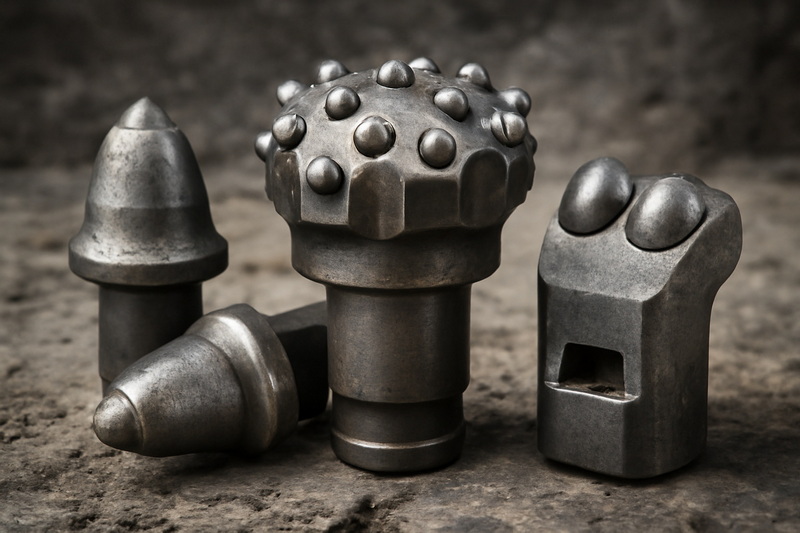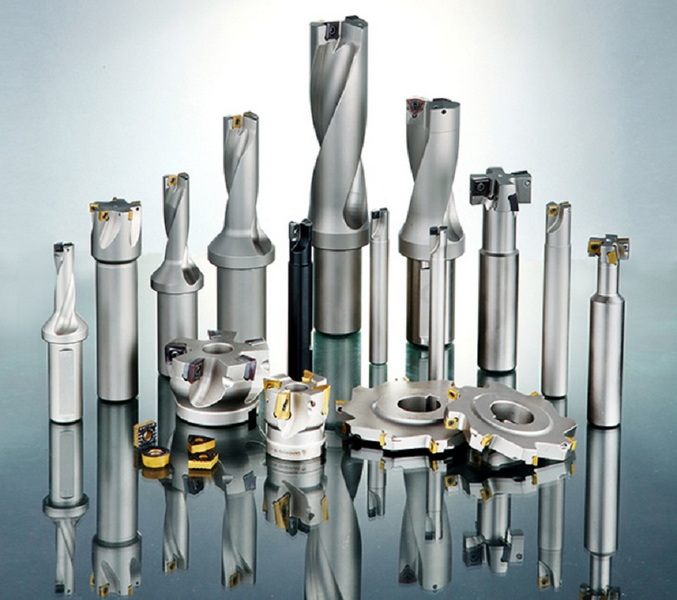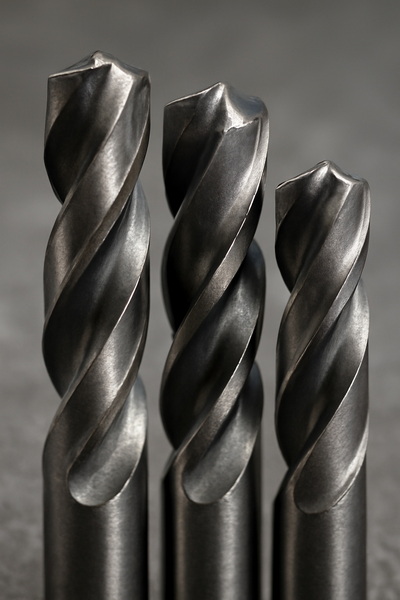Content Menu
● Introduction to Tungsten and Tungsten Carbide
● Chemical Composition and Structure
>> Tungsten
>> Tungsten Carbide
● Physical Properties
>> Additional Properties
● Hardness and Durability
>> Tungsten
>> Tungsten Carbide
● Manufacturing and Processing
>> Tungsten
>> Tungsten Carbide
● Applications and Industries
>> Tungsten
>> Tungsten Carbide
● Cost and Availability
>> Factors Affecting Cost
>> Availability
● Environmental and Health Considerations
>> Environmental Impact
>> Health and Safety
● Comparison Table: Tungsten vs Tungsten Carbide
● Unique Uses and Innovations
>> Tungsten in Technology
>> Tungsten Carbide in Modern Manufacturing
>> Jewelry and Lifestyle Products
● Conclusion
● FAQ: Tungsten vs Tungsten Carbide
>> 1. What is the main difference between tungsten and tungsten carbide?
>> 2. Why is tungsten carbide preferred for cutting tools over pure tungsten?
>> 3. Can tungsten carbide jewelry be resized like gold or silver rings?
>> 4. Is tungsten carbide magnetic?
>> 5. Which is heavier: tungsten or tungsten carbide?
Tungsten and tungsten carbide are two materials that have revolutionized modern industry, engineering, and even jewelry. Though they share a similar name and both contain the element tungsten, their properties, applications, and performance differ dramatically. This article provides an in-depth exploration of tungsten and tungsten carbide, comparing their structures, characteristics, uses, and advantages. Along the way, you'll find visual guides and answers to the most frequently asked questions about these remarkable materials.

Introduction to Tungsten and Tungsten Carbide
Tungsten is a chemical element with the symbol W and atomic number 74. It is renowned for its exceptional density, high melting point, and impressive strength. Tungsten carbide, on the other hand, is a compound formed by combining tungsten and carbon atoms. This union results in a material that is even harder than tungsten itself, with unique properties that make it indispensable for cutting tools, wear-resistant parts, and high-performance applications.
Although both materials are closely related, their differences are significant enough to influence how they are used in various industries. Understanding these differences is essential for anyone working with advanced materials, whether in manufacturing, engineering, design, or even jewelry making.
Chemical Composition and Structure
Tungsten
- Elemental Symbol: W
- Atomic Number: 74
- Pure Metal: Tungsten is a dense, grayish-white metal with a body-centered cubic crystal structure.
- Melting Point: 3,422°C (6,192°F)
- Density: 19.3 g/cm³
Tungsten's atomic structure gives it remarkable physical properties, including its ability to withstand extremely high temperatures and resist deformation under stress. As a transition metal, tungsten is often alloyed with other metals to enhance its properties for specialized applications.
Tungsten Carbide
- Chemical Formula: WC
- Compound: Equal parts tungsten and carbon atoms, typically with a hexagonal crystal structure.
- Melting Point: 2,870°C (5,198°F)
- Density: 15.6 g/cm³
- Binders: Often combined with cobalt or nickel to improve toughness and manufacturability.
Tungsten carbide is not a pure element but a ceramic-like compound. The carbon atoms fit into the interstitial spaces of the tungsten lattice, resulting in a material that is much harder than either element alone. The addition of binders such as cobalt or nickel helps to overcome the inherent brittleness of ceramic materials, making tungsten carbide more suitable for industrial use.
Physical Properties
| Property | Tungsten | Tungsten Carbide |
| Melting Point | 3,422°C | 2,870°C |
| Density | 19.3 g/cm³ | 15.6 g/cm³ |
| Electrical Conductivity | Excellent | Lower than tungsten |
| Thermal Conductivity | High | High |
| Hardness (Mohs scale) | 7.5–8 | 9–9.5 |
| Toughness | High | Lower (brittle) |
| Color | Grayish-white | Gray, metallic |
Additional Properties
- Corrosion Resistance: Both tungsten and tungsten carbide are highly resistant to corrosion, though tungsten carbide can be more susceptible to chemical attack in certain acidic environments due to its binder phase.
- Magnetic Properties: Pure tungsten is non-magnetic, while tungsten carbide may exhibit slight magnetism if cobalt binders are used.
- Thermal Expansion: Tungsten has a very low coefficient of thermal expansion, making it stable under temperature fluctuations. Tungsten carbide also has low thermal expansion, which is valuable in precision applications.
- Elasticity: Tungsten is relatively elastic and can absorb shock loads, while tungsten carbide is rigid and less forgiving under impact.
Hardness and Durability
Tungsten
Tungsten is known for its impressive hardness, ranking between 7.5 and 8 on the Mohs scale. It is also highly ductile, meaning it can withstand significant deformation without breaking. This makes tungsten suitable for applications that require both strength and some flexibility, such as electrical contacts, filaments, and certain alloys.
Tungsten's resistance to wear and its ability to retain its shape under extreme heat make it ideal for use in environments where other metals would fail. Its combination of hardness and ductility is rare among metals, providing a balance that is highly valued in engineering.
Tungsten Carbide
Tungsten carbide is among the hardest materials known, second only to diamond. With a Mohs hardness of 9–9.5, it is exceptionally resistant to scratching, wear, and abrasion. However, this extreme hardness comes at the cost of brittleness; tungsten carbide is more likely to chip or shatter under heavy impact compared to pure tungsten.
The durability of tungsten carbide is why it is the preferred material for cutting tools and wear-resistant components. It can maintain a sharp edge and resist deformation even under intense mechanical stress, making it indispensable in industrial machining and mining.
Manufacturing and Processing
Tungsten
Tungsten is typically extracted from ores such as wolframite and scheelite. The extraction and purification process involves several steps, including crushing, grinding, chemical treatment, and high-temperature reduction. The resulting tungsten powder can then be pressed and sintered into bars, rods, or other forms.
Tungsten can be worked using standard metalworking techniques, though its hardness and high melting point require specialized equipment. It can be drawn into wire, rolled into sheets, or machined into complex shapes for various applications.
Tungsten Carbide
The production of tungsten carbide is more complex. It starts with tungsten powder, which is mixed with carbon black and heated in a furnace to form tungsten carbide powder. This powder is then combined with a binder (usually cobalt or nickel) and pressed into the desired shape.
The pressed “green” parts are sintered at high temperatures, causing the binder to melt and bond the tungsten carbide grains together. The result is a dense, hard material that can be ground to precise tolerances using diamond abrasives.
Tungsten carbide's manufacturing process allows for the creation of complex shapes and composite materials, such as inserts for cutting tools, mining bits, and even intricate jewelry designs.
Applications and Industries
Tungsten
- Electrical Filaments: Used in incandescent light bulbs due to its high melting point.
- Alloys: Added to steel to improve hardness and temperature resistance.
- Radiation Shielding: Utilized in medical and industrial equipment.
- Counterweights and Ballasts: Used in aerospace, automotive, and marine industries due to its high density.
- Military Applications: Armor-piercing ammunition and projectiles.
- Electronics: Utilized in semiconductors and electrical contacts due to its excellent conductivity.
- Aerospace: Used in rocket engine nozzles and other components exposed to extreme heat.
Tungsten Carbide
- Cutting Tools: Drill bits, milling cutters, and saw blades for machining metals, plastics, and composites.
- Mining and Drilling: Used in rock drilling, oil and gas exploration, and mining equipment.
- Wear Parts: Valve seats, nozzles, and dies in manufacturing.
- Jewelry: Rings and bracelets prized for their scratch resistance and metallic luster.
- Medical Instruments: Scalpels, dental tools, and surgical instruments.
- Aerospace and Automotive: Components exposed to high wear or requiring precise tolerances.
- Sports Equipment: Used in fishing weights, darts, and golf club heads for their durability and weight.

Cost and Availability
Tungsten is generally less expensive than tungsten carbide. The additional processing, use of binders, and manufacturing techniques required to produce tungsten carbide components increase their cost. However, the superior performance and longevity of tungsten carbide parts often justify the investment, especially in demanding industrial applications.
Factors Affecting Cost
- Raw Material Prices: The cost of tungsten ore and the purity required for different applications.
- Processing Complexity: Tungsten carbide requires more energy and specialized equipment to produce.
- Market Demand: High demand in industries such as mining, machining, and jewelry can drive up prices.
- Recycling: Both tungsten and tungsten carbide can be recycled, which can help stabilize supply and cost.
Availability
Tungsten is relatively abundant in the Earth's crust, but economically viable deposits are less common. Major producers include China, Russia, and Canada. Tungsten carbide, being a manufactured material, is available globally wherever there are facilities capable of producing it.
Environmental and Health Considerations
Both tungsten and tungsten carbide are considered relatively safe for most industrial uses. However, inhaling tungsten or tungsten carbide dust can pose health risks, particularly in manufacturing environments. Proper ventilation and protective equipment are essential. Recycling and responsible sourcing are increasingly important as demand for these materials grows.
Environmental Impact
- Mining: Tungsten mining can have environmental impacts, including habitat destruction and water contamination. Sustainable mining practices and reclamation are increasingly emphasized.
- Manufacturing: The production of tungsten carbide consumes significant energy and may generate hazardous byproducts. Advances in recycling and cleaner production methods are helping to reduce the environmental footprint.
- Recycling: Both materials are highly recyclable. Scrap tungsten and tungsten carbide are collected, processed, and reused in new products, reducing the need for virgin material extraction.
Health and Safety
- Dust Exposure: Prolonged exposure to tungsten or tungsten carbide dust can cause respiratory issues. Workers should use protective equipment and follow safety protocols.
- Toxicity: Both materials are generally considered non-toxic in solid form, but certain compounds or fine powders can pose health risks if ingested or inhaled.
Comparison Table: Tungsten vs Tungsten Carbide
| Feature | Tungsten | Tungsten Carbide |
| Nature | Pure element | Compound (tungsten + carbon) |
| Hardness | High (7.5–8 Mohs) | Extremely high (9–9.5 Mohs) |
| Density | Very high (19.3 g/cm³) | High (15.6 g/cm³) |
| Ductility | Ductile, can be drawn | Brittle, cannot be drawn |
| Machinability | Difficult, but possible | Requires diamond tools |
| Wear Resistance | Good | Exceptional |
| Common Uses | Filaments, weights, alloys | Cutting tools, wear parts, jewelry |
| Cost | Moderate | Higher |
| Recyclability | Excellent | Excellent |
Unique Uses and Innovations
Tungsten in Technology
Tungsten's high melting point and conductivity make it critical in electronics and high-temperature applications. It is used in X-ray tubes, electrodes for arc welding, and as a base material for high-performance alloys used in aerospace and defense.
Tungsten Carbide in Modern Manufacturing
Tungsten carbide's role in precision manufacturing cannot be overstated. Its ability to cut, shape, and finish other metals has enabled advances in automotive, aerospace, and medical device production. Innovations in binder technology and composite materials have further expanded its use in extreme environments.
Jewelry and Lifestyle Products
Tungsten carbide has become a popular choice for jewelry due to its modern appearance and resistance to scratching. Unlike traditional precious metals, tungsten carbide rings retain their polish and luster for years, making them a favorite for wedding bands and fashion accessories.
Conclusion
Tungsten and tungsten carbide are both remarkable materials, each with unique strengths that make them indispensable across a wide range of industries. Tungsten, as a pure metal, is prized for its density, high melting point, and ductility, making it ideal for electrical, military, and structural uses. Tungsten carbide, a compound of tungsten and carbon, offers unmatched hardness and wear resistance, making it the material of choice for cutting, drilling, and high-wear applications.
Understanding the differences between tungsten and tungsten carbide is crucial for selecting the right material for any given application. Whether you're choosing a wedding ring, specifying industrial equipment, or designing advanced aerospace components, knowing the properties and advantages of each material ensures optimal performance and value.

FAQ: Tungsten vs Tungsten Carbide
1. What is the main difference between tungsten and tungsten carbide?
Tungsten is a pure metallic element known for its high density and melting point, while tungsten carbide is a compound of tungsten and carbon, renowned for its extreme hardness and wear resistance. Tungsten is more ductile and impact-resistant, whereas tungsten carbide is harder but more brittle.
2. Why is tungsten carbide preferred for cutting tools over pure tungsten?
Tungsten carbide's exceptional hardness and ability to maintain a sharp edge under high stress make it ideal for cutting tools. Pure tungsten, though hard, cannot match the wear resistance and edge retention of tungsten carbide in demanding applications.
3. Can tungsten carbide jewelry be resized like gold or silver rings?
No, tungsten carbide rings cannot be resized due to their extreme hardness and brittleness. Attempting to resize them can cause cracking or shattering. It's important to select the correct size when purchasing tungsten carbide jewelry.
4. Is tungsten carbide magnetic?
Tungsten carbide itself is not magnetic, but the presence of certain metallic binders (such as cobalt) used in its manufacture can impart slight magnetic properties. Pure tungsten is also non-magnetic.
5. Which is heavier: tungsten or tungsten carbide?
Tungsten is denser and therefore heavier than tungsten carbide. Tungsten has a density of 19.3 g/cm³, while tungsten carbide's density is around 15.6 g/cm³. Both are significantly heavier than steel or titanium.
















